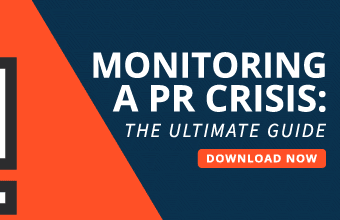It is undeniable that the entire world is feeling the effects of COVID-19, but few businesses are under such intense pressure as those in the travel and hospitality industries. Both domestic and international travel has ground to a halt, and self-isolation has forced everyone indoors. This is not, however, cause for businesses to “go dark” and disappear along with the rest of the world.
For communications professionals navigating a global public relations crisis such as COVID-19 for the first time, here are three key things to keep in mind.
1. Focus on brand value
Rather than revolve around goods and services in their own right, marketing narratives during this time must focus on what companies are doing to help. According to a recent study, more than three quarters of consumers now expect brands to be communicating how they are “helpful in everyday life,” and an overwhelming majority want brands to relay what they are doing to tackle the current crisis.
The travel industry seems to have preempted this new expectation: hotels are opening their doors to healthcare workers tackling COVID-19 outbreaks, while several airlines are now using flights to transport medical supplies.
While altruism at this scale is unrealistic for most businesses, it is important that brands consider tangible actions they could be taking to solve a problem faced by their community.
A great way to do this would be for brands to reach out to their audiences via social media, and asking a very simple question: “what can we do to help.” Feedback from consumers will then provide critical insight into what is expected of a brand during this time.
2. Strive for honesty, not perfection
During a global crisis such as this, uncertainties far outweigh what is known. While customers are under more stress than ever before, most audiences have expectations of honesty from the brands they trust. When a brand is communicating certain actions, accountability and vulnerability are key: few consumers expect perfection at a time like this.
A great way of adding a human touch to communications is to share a message through a CEO’s personal Twitter account, which can then be shared by the brand account. Marriott CEO Arne Sorenson, for example, released an emotional video message last month in which he detailed the company’s current revenue loss and plans for the future. It wasn’t good news, but it was delivered with authenticity.
3. Speak, don’t sell
With the number of confirmed COVID-19 cases now exceeding 4.4 million, and the death toll in the US climbing past 86,000, the safety of employees and communities must be every brand’s top priority. International travel advisories continue to encourage stay-at-home orders, and governments are demanding that citizens practice social distancing: to suggest that people travel in any form right now is irresponsible at best.
A recent study has shown that consumers are keeping a close watch of how brands are responding to the COVID-19 crisis, with 66% of respondents agreeing that brand behavior now “will have a huge impact on their likelihood to buy that brand in the future.” Messages deemed to be putting sales over safety are sure to prove disastrous for any brand for the time being.
The good news for marketers during COVID-19 is that times of crisis can prove an excellent opportunity to build trust. Brands should focus on the wellbeing of their customers, and expect to reap the rewards of good faith in the future.








